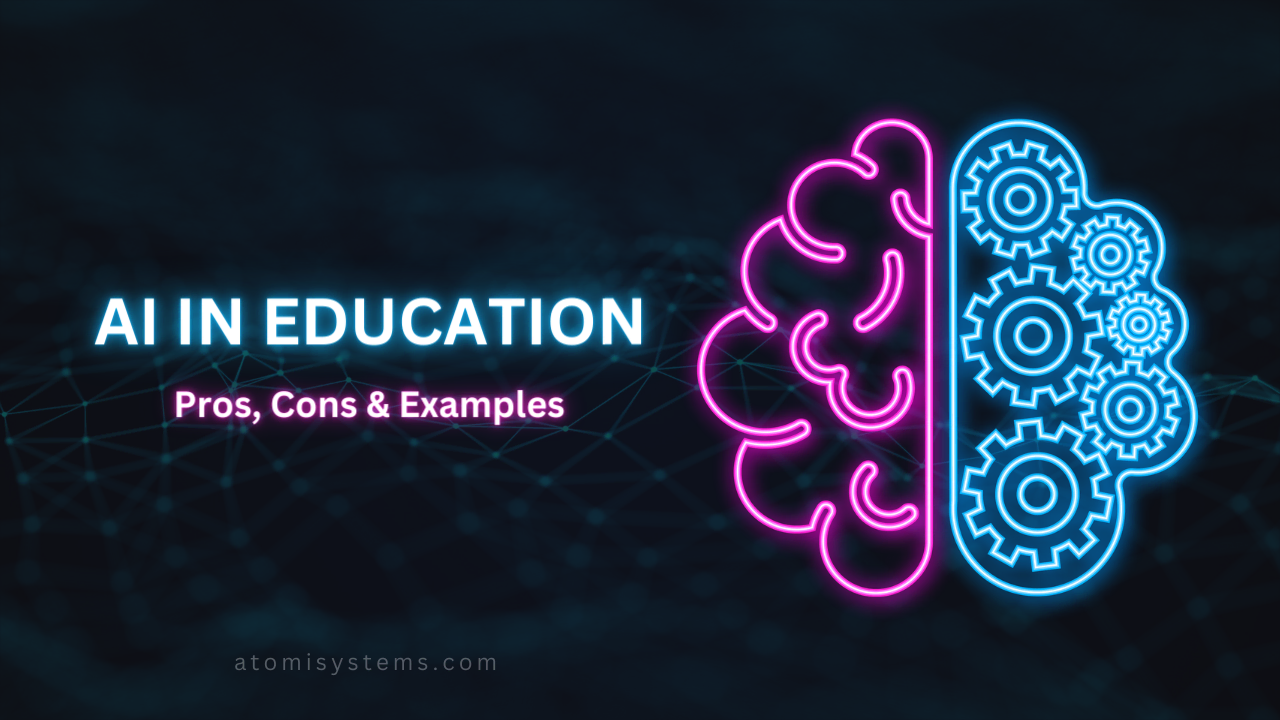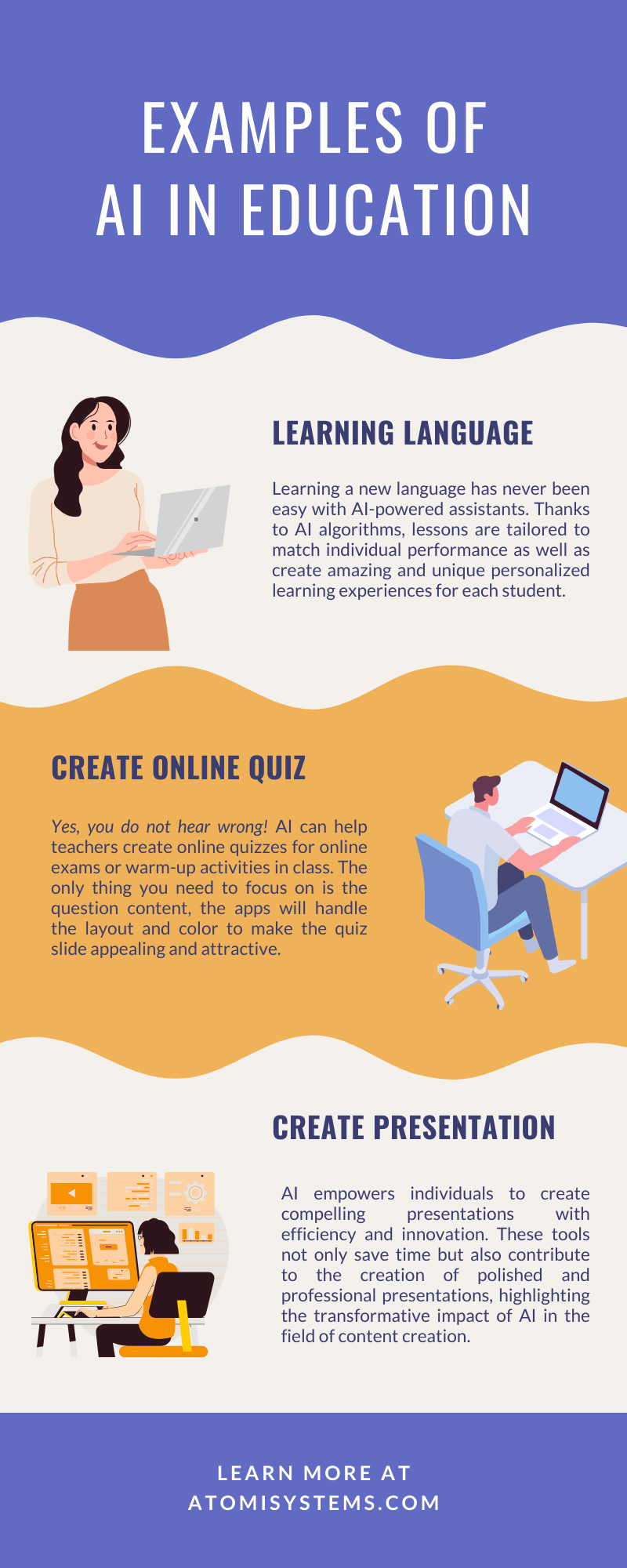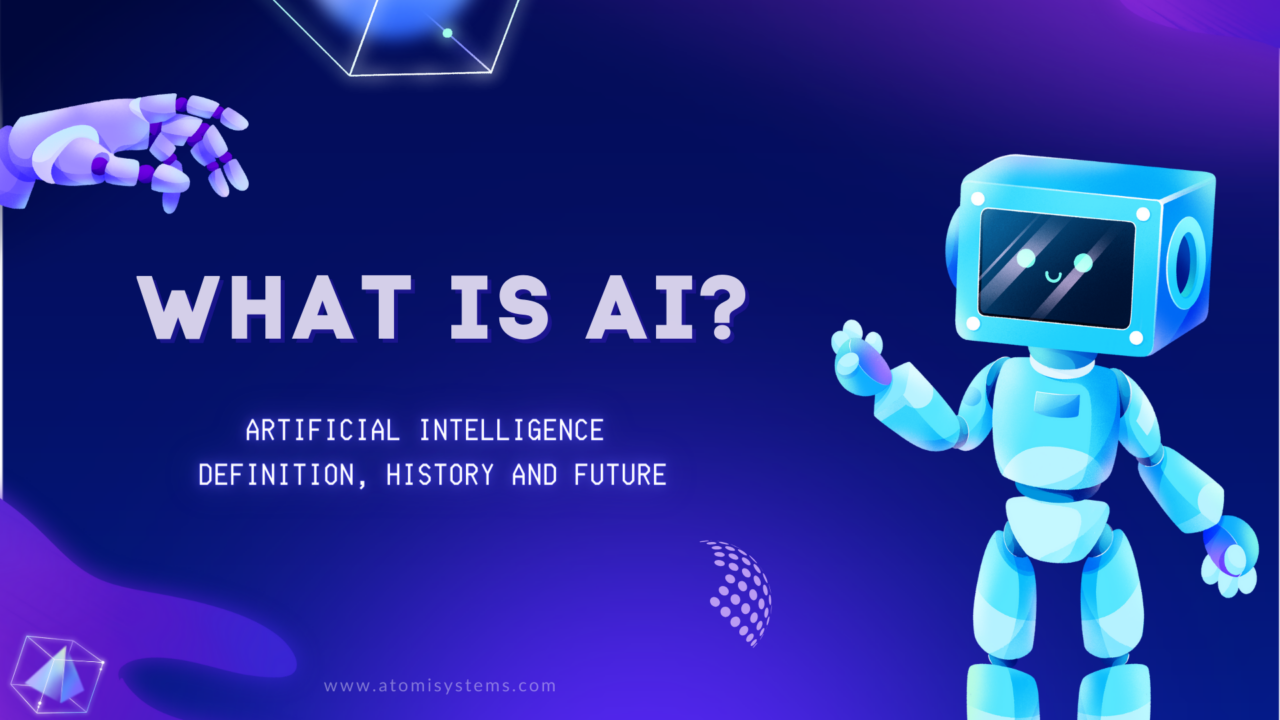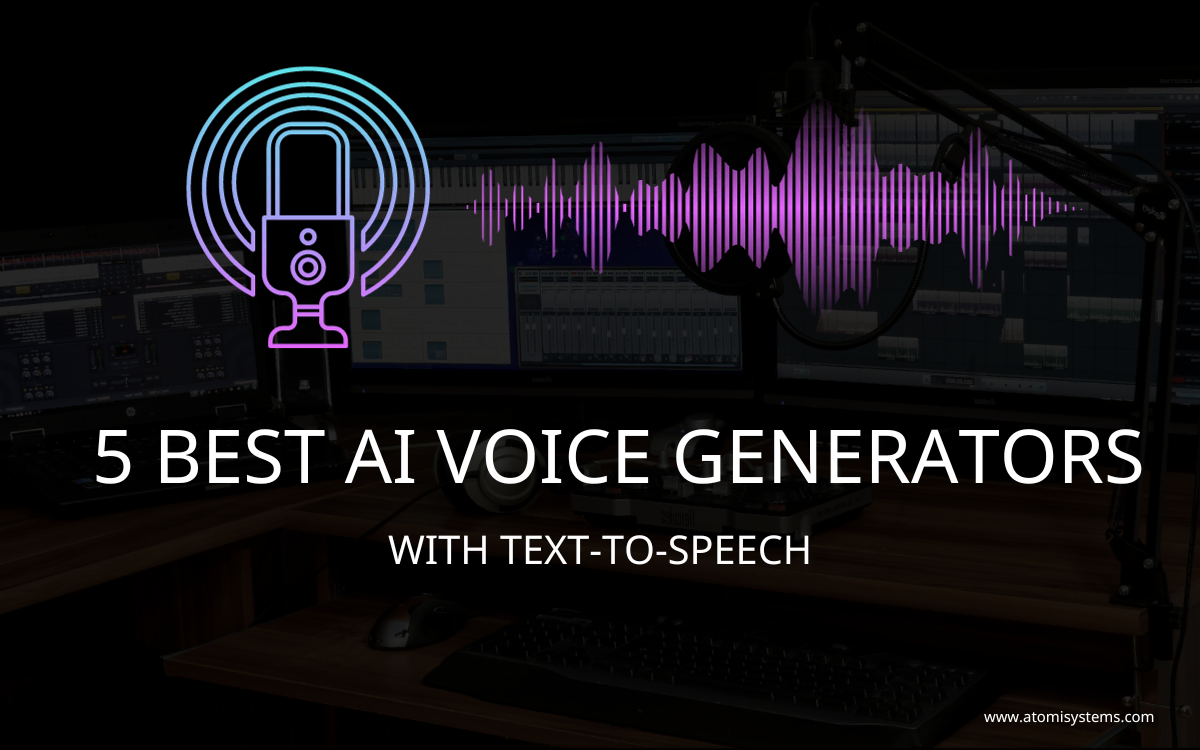With the advent of technology, artificial intelligence (AI) is becoming increasingly popular in many industries across the globe. But how exactly can we use AI in education? Let’s dive deeper into today’s blog to learn more about artificial intelligence’s benefits, drawbacks, and examples in education.
In the 21st century, the concept of artificial intelligence is not new. It has the potential to revolutionize various fields, and education is not an exception. The application of AI in education aims to enhance students’ learning outcomes while supporting teachers in improving educational practices. Besides the positive impacts, it may also have negative ones. So, we’ll explore more now.

If you want to know more about AI’s definition and history, see the article What is AI here.
Pros of AI in Education
In terms of education, technology offers several significant advantages. Here are the common benefits of AI in education.
Personalized Learning
AI can create personalized learning experiences tailored to each student’s needs. Through the analysis of student performance, AI algorithms can adjust learning materials, pace, and difficulty levels, therefore, guaranteeing personalized educational content for every student.
Provide Real-time Feedback
Whether artificial intelligence can provide students with feedback? Of course! AI can give students detailed feedback about their performance. This reduces the load on teachers by providing simultaneous instruction in a classroom setting. Based on the feedback, students can gain insights into their strengths and limitations, helping them discern areas to concentrate on in future lessons.
Access to Vast Educational Resources
With the power of AI, teachers, and students can access a huge variety of educational resources. For example, image, video, audio, information, and so on. This expanded resource pool enriches the learning experience and promotes self-directed learning.
Protect Students Data
AI can also help keep computer networks and systems safe. It works like a digital guardian, defending student information from online dangers. Not only students but also educators and administrators can be protected. With AI’s assistance, we can create a safer online environment for students and ensure that their information is protected from cyber threats.
Cons of AI in Education
While AI can have significant educational benefits, it is important to contemplate AI. Below are some of the disadvantages of AI in education.
Although technology plays a crucial role in improving the educational experience, it is not the sole factor. If we depend on technology entirely, students may lose real communication skills and delay EQ development. This would contradict our educational goals. Therefore, AI needs to serve as a helpful tool in supporting educational systems rather than replacing essential aspects of learning.
Lack of Interpersonal Interaction
One notable disadvantage of incorporating AI extensively in education is the potential risk of replacing the essential role of teachers. If AI can provide instant feedback, offer vast resources, give detailed learning outcome assessments, and answer all students’ questions, what role do teachers play now?
Replace Teacher’s Role
In the current context, all the issues can be addressed when students ask a chatbot like ChatGPT or Bing AI. It is a quick and convenient way to absorb knowledge but limits students’ thinking somehow. Students become lazy and dependable, they may not want to think out of the box or come up with new ideas.
Limit Students’ Creativity
Above are some pros and cons of artificial intelligence in education that we highlight. In the next part, let’s see examples of AI in education.
Example of Artificial Intelligence in Education
AI can benefit many aspects of education. Want to know more? We’ll examine actual instances of how AI is applied in educational settings.

As shown in the figure above, AI can assist both teachers and students to teach and study smarter and more effectively. Regarding learning language, there are many language-learning applications in the market nowadays, you name it, Duolingo, ELSA, and so on. You can also experience Quizizz, Quizlet, or Kahoot to create online quizzes. What’s more, various online tools, such as Beautiful.AI and Canva, rely on AI to help users refine content and create visually appealing slides. Regarding generating presentations and quizzes let’s try out uPresenter. It uses artificial intelligence to make creating presentations and quizzes easier, faster, and more effective than ever before.
Final Words
To sum up, using AI in education has good and not-so-good things. AI can make learning personal and more efficient, but some worry it might take away jobs and make us depend too much on technology. Still, the examples we talked about show that AI can change how we learn and teach. As we go forward, it’s important to find a balance – using the good parts of AI while also being careful about the challenges it brings. This way, we can make the most of AI in education.
Follow us:
See also:


